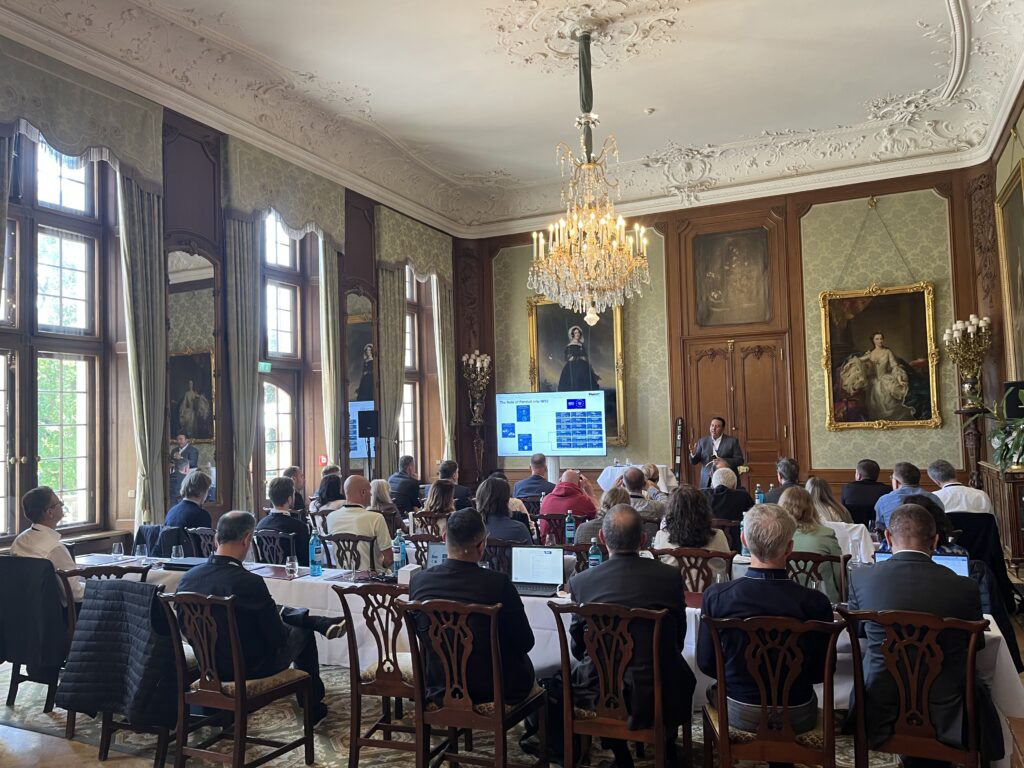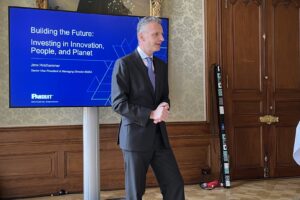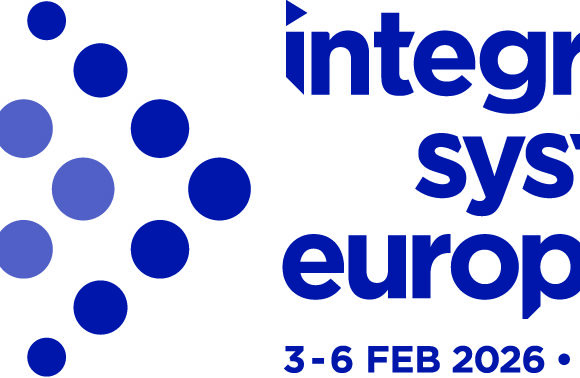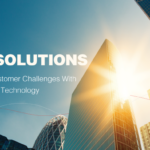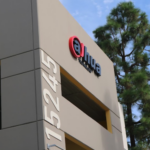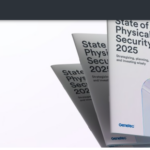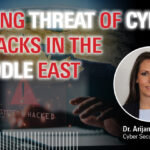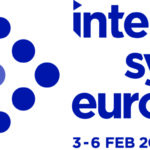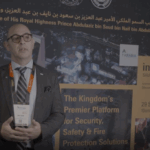Panduit European Conference: We Witnessed What the Future Looks Like

On September 17, American company Panduit, a premium provider of networking solutions, held its annual European press conference at the elegant Schlosshotel in Kronberg, Germany. As one of nearly thirty attendees from technology and media outlets, we had the opportunity to learn about innovations poised to shape the industry for the next decade.
By: Damir Muharemović
We hadn’t even stepped into the Schlosshotel before our senses were already overwhelmed by the sights and scents of the venue. This luxury castle-hotel, built in the late 19th century as a residence for German Empress Friedrich, the eldest daughter of British Queen Victoria, served as a symbol of ties between the German and British courts. Its charm has been preserved to this day in its authentic form. Every door handle, chair, chest of drawers, or tapestry is a work of art, every room uniquely designed, every wall filled with antiques and artwork from the imperial collection. This blend of historical elegance and modern luxury served as a prelude to another, more contemporary story about quality and durability.
Vision Drives Inspiration
“This is a place where vision, innovation, and history meet. That’s why we chose the Schlosshotel for this conference,” said Martin Kandziora, Senior Marketing Manager for EMEA at Panduit. The belief that this vision is the key to growth drives Panduit, a company with 6,000 employees and revenues in the billions, to innovate and inspire. “I have witnessed this firsthand over the years, from Chicago to Costa Rica. The products we will see today reflect this quality and sustainability. We invest heavily, and our products take time to develop. We don’t hold press conferences often, but today we have something to show and to demonstrate how Panduit is shaping the future of IT networks,” concluded Kandziora.
The Strength of Engineering
Three trends underpin growth in the IT networking industry, explained Jens Holzhammer, Managing Director for EMEA at Panduit. The first and most important driver is the massive increase in generated data, primarily from the proliferation of images and video, and the growing adoption of AI. This demands much higher bandwidth.
“This has been the main driver for at least the past three years. Data centers require a lot of power, and each data center demands significant engineering,” said Holzhammer. The second driver is electrification and the transition from fossil fuels to renewable energy, and the third is reshoring, that is, the return of manufacturing to home countries to reduce costs, improve quality control, and strengthen local economies. The latter is particularly noticeable in the electronics component segment, as supply chains have been disrupted.
These trends affect both Panduit and its customers, prompting the company to invest heavily in multi-continent manufacturing. In South America, it opened two state-of-the-art factories in Costa Rica and Mexico. In Southeast Asia, production moved from Singapore to a new facility in Malaysia, and in Indiana, USA, a large, fully automated distribution center was established. In Europe, the Romanian factory, operational for sixteen years, is now set for expansion.
“I asked myself, when I became CEO of Panduit, what is particularly important for this company. Then I visited the Innovation Center and was amazed by the engineering: more than 250 engineers work daily in R&D, resulting in over 3,000 patents. Panduit truly shapes global communications standards,” Holzhammer emphasized, concluding that continuous innovation, high-quality production, and exceptional service and customer experience are the three pillars of Panduit’s foundation.
Unlike conventional PoE, which is limited to 100 meters and lower power, FMPS delivers 30 times the distance and six times the power, making it ideal for older buildings or city centers, as well as modern IT infrastructures, industrial campuses, stadiums, airports, and the smart buildings of the future.
The New Intelligent PDU Straight from the Line
Hans Obermillacher, Business Development Manager for Data Centers in EMEA, presented key trends and technological solutions demonstrating how data centers must evolve to meet future challenges. The industry focus is on energy efficiency – not only room cooling but chip-level cooling – followed by power distribution in high-demand environments (currently cited up to 600 kW per cabinet), and the need to redefine infrastructure in networking and industrial applications. Edge computing, intelligent Power Distribution Units (PDUs), and containerized data centers are the three leading trends highlighted by Obermillacher.
As a concrete example, the SUPERPOD in Cologne uses eight NVIDIA H100 GPUs in DGX H100 servers. This data center is designed to support heavy consumer and AI workloads with substantial power consumption, illustrating the scale of modern installations. For edge infrastructure, examples include retail chains, banks, and factories in Europe, “where solutions typically involve a few cabinets, multiple iPDUs, one UPS, a cooling system, and all necessary connectivity (fiber, copper). Key benefits of such edge setups are lower latency, higher bandwidth, and enhanced security,” Obermillacher noted.
Panduit’s UPS portfolio covers 1 kVA to 20 kVA devices, supporting single- and three-phase systems. These are high-efficiency double-conversion UPS units (up to 97.5% efficiency in online mode), available with Li-Ion or VRLA batteries. They offer up to nine minutes of autonomy without additional batteries, including network cards for advanced management and monitoring.
Particular attention was given to Panduit’s new EL2P iPDU (Elevate to Power). This intelligent power distribution unit provides simplified installation, greater control over power, and automation. Key features include: precise energy metering (±0.5%) via an intuitive 1.8” touchscreen, 4-in-1 outlets supporting diverse equipment, hot-swappable controller and display modules with zero downtime, dual 1Gb Ethernet with daisy-chain capability for up to 64 iPDUs on a single IP, and support for high operating temperatures up to 60°C. The EL2P meets advanced cybersecurity standards (UL 2900-1, IEC 62443-4-2), including secure network authentication and intrusion protection. Finally, it integrates with Cisco Nexus Dashboard, providing energy usage insights without additional hardware.
“This iPDU will also have an EL2S version and a higher-capacity model expanding to even greater amperages of up to 100 A that are planned for 2026,” Obermillacher announced.
20-Year Warranty on Cable Ties
The third session focused on electrification as a key factor in sustainability and technological advancement. Ferhat Peker, Account Manager for the Solar Industry in EMEA, emphasized that climate change, technological innovation, environmental policies, and economic incentives are accelerating the need for electrification across sectors, particularly transport, renewable energy, data centers, and smart buildings. According to Gartner, 75% of enterprises will implement sustainability programs for data center infrastructure by 2027.
Later this year, Panduit will also bring Eco cable ties to market, made entirely from recycled nylon, yet without compromising on quality or fire safety.
Using a cabling project for an 80 MW facility for Energie Baden Württemberg in Longenenslingen, Peker demonstrated how Panduit’s solution reduced installation costs by 45%, doubled implementation speed, and offered a 20-year warranty on components. Safety was also highlighted: innovative cable cleats allow installers to reduce steps such as pulling or cutting cables, minimizing injury risk and increasing efficiency.
Particular emphasis was placed on Panduit’s Nylon 612 cable ties, designed for extreme weather conditions. “Only Panduit offers a 20-year warranty on cable ties for harsh conditions, while standard ties last 7–8 years. In Europe, we have 132 rainy days per year, plus significant temperature variations. Panduit has developed a product that withstands all these conditions,” Peker stated.
Next-Generation Cables

Jorge Neyton Avila Pacheco, Senior Business Development Manager and expert in AI, smart buildings, and cybersecurity
The final, highly engaging presentation on the transformation of smart buildings was delivered by Jorge Neyton Avila Pacheco, Senior Business Development Manager and expert in AI, smart buildings, and cybersecurity. Growing energy demand, grid limitations, and sustainability requirements necessitate fundamental changes in electricity distribution. According to the International Energy Agency, global energy demand grew by 4.5% in 2024. At the same time, electricity prices are rising, and data centers are projected to consume 4–6% of total electricity in the near future.
In response, Panduit is developing next-generation Cat6 cables with an extended transmission reach of up to 150 meters compared to the 100-meter limit of current Cat5e, Cat6, and Cat6a Ethernet cables. This will have an impact on multiple industries. “We are developing cables capable of delivering 90 W power and PoE data over 150 meters. This expands the covered space from 31,400 m² to 70,600 m². When offering this technology, we aim for the highest quality,” Pacheco explained.
In addition, Panduit’s RapidID technology simplifies cable documentation using factory-embedded unique labels. This allows for quick documentation, verification, and cable tracing, saving time and costs and making installations up to 50% faster. It also reduces risk by eliminating manual data entry and enables the identification of all active connections, enhancing cybersecurity. “We cannot protect what we cannot see,” Avila emphasized, underlining the importance of physical infrastructure visibility as a foundation for NIS2-compliant security strategies.
Pacheco also briefly discussed Panduit’s cybersecurity strategy, which is built on three pillars. The first pillar, physical protection, is in fact the first line of defense. The second is network infrastructure visibility, which Panduit achieves by placing sensors inside cabinets, allowing administrators to see within seconds who is attempting to gain access. The third pillar is business continuity planning, encompassing a set of strategies, processes, and technologies that enable the rapid restoration of systems and infrastructure to operational status after a major incident.
he World’s First UL-Certified Power System
A standout innovation that impressed the audience was Panduit’s Fault Managed Power System (FMPS), a power distribution technology combining low-voltage safety with high-power delivery over long distances. It is the world’s first Class 4 power system certified under UL 1400-1 and IEC/UL 62368-1, setting new benchmarks for safe, efficient, and scalable energy distribution in complex infrastructure environments.
In the context of accelerated digital transformation in EMEA and growing IoT, smart building, and wireless network adoption, the need for reliable, efficient, and secure power systems has never been greater. FMPS delivers up to 600 W per pair of Class 4 copper conductors over distances of up to 2 km, with efficiency exceeding 97% and up to 60% cost savings on cabling and installation. It supports multiple hot-swappable transmitter modules, up to nine per chassis, and up to three hot-swappable power units, collectively delivering up to 4.8 kW per chassis.
FMPS uses pulsed power technology, sending energy via short impulses (typically 2 ms on, 1 ms off) over multi-strand Class 4 cables. Each pulse is monitored live to detect faults such as shorts, wire errors, overloads, or grounding faults. When a fault is detected, power delivery stops within 2 ms, greatly reducing shock or fire risk compared to traditional high-voltage systems. Integrated remote monitoring and management allow technicians to track consumption, manage components remotely, and minimize on-site interventions.
“This architecture is far more efficient because future buildings will use DC power. I believe this technology has no limits and will reach homes in the coming years. Today, energy is lost converting AC to DC and back. Fault Managed Power enables direct energy distribution. Even data centers will begin using it,” Pacheco noted, adding that tests for power delivery up to 2 kW are already underway, generating particular interest.